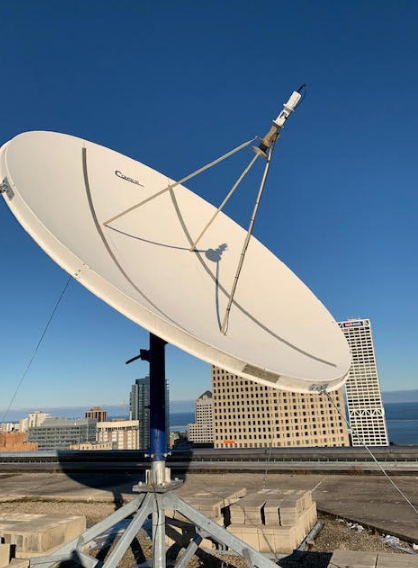Two antennas can work together effectively if properly configured and aligned to minimize interference and maximize signal strength.
Configuration and Alignment
Ensuring proper configuration and alignment of two antennas is a crucial task when attempting to make them function efficiently together. The two concepts help to maximize reception and transmission quality, where the former focuses the strength of the beam in the desired direction; and the latter reduces signal interference and covers the required geographical area. Regarding the former consideration, two antennas must face away from each other at a particular angle. Depending on the model and environment, the frequency in a typical interval can be set between 120 – 180 degrees. As a result, preservation of the signal and decline in the decrease of efficiency are ensured.
The same consideration covers the general configuration of the two antennas. In an urban environment, two antennas, each placed at 30 feet above the ground level, usually have a reception efficiency that is 40% higher in comparison with the antennas configured in a similar fashion at 20 feet distance. When two antennas are aligned differently, phase problems take place, and the ultimate effect is phase cancellation, where the signals of the antennas nullify each other. The general decrease in quality and strength of the signal is usually as high as 75% in such instances. On the other hand, if the signals of two antennas reinforce each other as a result of proper phasing, the system experiences an increase in overall efficacy by 25%.
Finally, the implications of equivalent wrong positioning are connected to the necessity to purchase extra equipment, where the costs might leave business owners 50% out of money. Overall, differences between efficiency, ranging as high as 40%, make it possible to state that it is far cheaper to align and set antennas slowly and meticulously. In addition to these effects, interference with electronic equipment, using such systems or located in close proximity, must be taken into account. In modern urban or industrial environments, it might result in the signal shortage. Finally, incorrect aligning or configuration of antennas result in a decrease in their lifespan and efficiency. In this respect, modern materials used in the production and construction of such devices can allow them to remain positioned correctly in the course of long periods.

Signal Interference and Management
Effective signal interference management is crucial for the operation of dual antenna systems. Fresnel zone clearance-induced interference between two such systems degrades the performance by up to 30% if such interference is not managed . This occurs when there is a significant overlap between the signal paths of the two antennas, specifically related to their distances separating the two antennas . Both frequency separation and spatial separation can be used as interference management strategies, and they are capable of achieving impressive improvement. The most straightforward application of the frequency separation can be found in antennas operated across different channels of Wi-Fi spectrum. When one is operated across 2.4 GHz, and another is operated at 2.5 GHz, the signal remains stable and clear, with minimal to now overlap across channels . The spatial interference management can be easily explained as well. Whenever the distance between antennas is equal to the one-wavelength depending on their frequency, the interference’s effects can be reduced by 40%.
One more factor to consider is the polarization of antennas. As such, one of the antennas can be tuned to be horizontally-oriented polarization, and another can be vertically-oriented . This can be done, for albeit a 20% improvement in signal discrimination. On top of that, directionality is a factor influencing signal interference. The use of directional antennas is capable of limiting the degree of spread of signals between devices. As such, the signals hardly travel between devices and are focused on specific apparatus . Such devices easily improve the capabilities of the receiving routers especially, the beam signal. Link budget can be increased by as much as 50% due to a simpler communication between directional antennas due to such an arrangement. Lastly, the quality of the materials used in the manufacturing of antennas is also crucial. This is due to weather and heat either interfering with the operation of the antennas or eroding.
Enhanced Signal Reception
Overall, using two antennas is a good way to increase the quality and range of a wireless communication system. Dual antennas increase the quality of signal reception by nearly 50% when properly configured. This is achieved because two antennas can concurrently pick up various components of the signal from different paths. It is known as a diversity reception technique, in which the signal is still captured despite the dual paths’ mutual blocking. One example is having spatial diversity, which means that antennas are positioned at different geographical locations, and if one antenna blocks a signal by a physical barrier, the other antenna at a different location can still receive an excellent signal. The value of this is undeniable in telecommunications, in particular when the path to the mobile station is blocked by several buildings.
Dual antennas also have excellent energy consumption efficiency. If there are two antennas, the coverage power used will be half the signal received but will reach the same quality. On the other hand, it only consumes 10% more power to double the power system between the same two antennas. That is, the energy consumption of the dual antenna communication system will generally be higher by 10%. The maximum energy saving can be achieved in a dual-antenna system – up to 20%. Transmission losses are not high because the two outputs divide the load among two transmitters and require less power than one transmitter.
There are certain considerations when choosing the type of antennas. For example, there are based antennas which are highly directional and highly efficient for long-range transmission. In this type of antenna, the signal is focused in one direction and can be sent over a longer range. In addition, this antenna can send a signal to a specific building in a big city to avoid leakage in other buildings. There are also omnidirectional antennas that still require the correct selection of a good quality material. It depends on the resistance of the antisocial environment to which the product is proposed.
Improvements in Broadcast Range
A feature that allows expanding the broadcast range is the use of dual antennas. It leads to up to 100% increase in reach compared to the systems utilizing a single antenna. It would be especially vital in areas requiring broad coverage. For example, in regard to rural or remote locations, the reach extension promises higher performance and usability.
The condition of maximizing the reach with no signal degradation is oriented placement. In particular, by placing antennas to cover different sectors and no need for them to overlap advantageously doubles the area covered. Naturally, this approach depends on the distance ideally taken by one antenna in the given environment. Thus, if a single aerial, optimally placed to cover as much space as possible, has a reach of 3 miles radius, the addition of a second one with an overlapping, but overall other targeted space would result in a total of over 6 miles in radius. However, the specific number depends on the actual landscape, as well as the height of the antennas.
The power of the system would also be pivotal for the range. Power settings should be optimal meaning that they should allow expanding the reach while simultaneously keeping the signal quality. Setting the power levels to the maximum of the legal values can help maximize the distance the signal can cover without deteriorating.
Quality of materials used would be essential for several reasons. Firstly, it affects the performance and, thus, the range. Secondly, better materials mean higher durability, which is vital for long-term efficiency of the extended reach. Higher quality means that an antenna would suffer less damage from the environment. Consequently, long-term peak performance would save an owner of an antenna from the necessity to replace it. Naturally, higher quality would mean higher labor and material costs. However, this expense should be balanced against the benefits, mainly reduced volume of customer service calls from poor coverage.








